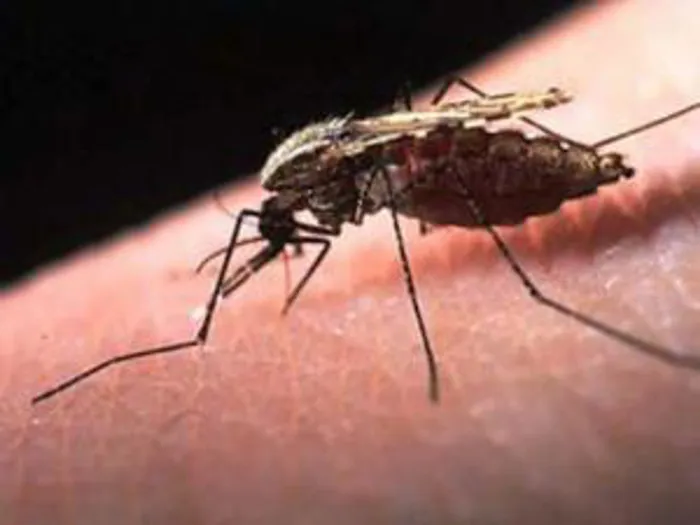Mosquitoes show resistance to anti-malaria insecticides

Tony Carnie
DURBAN: Some mosquitoes in northern KwaZulu-Natal have become resistant to three of the four most commonly used anti-malaria insecticides, including DDT – increasing the potential risk of new malaria epidemics unless the trend can be slowed or new control methods are found.
The discovery follows recent tests in the Mamfene area, east of Jozini dam, by a group of malaria researchers at Wits University and the National Institute for Communicable Diseases in Johannesburg.
The tests, involving the Anopheles arabiensis mosquito, confirmed that they were becoming resistant to DDT, a powerful organochlorine insecticide that is banned in most parts of the world.
The tests also showed mosquitoes were resistant to deltamethrin (a pyrethroid insecticide) and bendiocarb (a carbamate insecticide).
While the first signs of DDT and pyrethroid resistance in the area emerged nearly 10 years ago, the latest tests conducted earlier this year provided the first indication that some mosquitoes are now also resistant to the carbamate insecticide bendiocarb.
This suggests that one of the few remaining feasible insecticide options for malaria control could be organophosphates such as pirimiphos-methyl and fenitrothion, or a combination of several insecticide classes.
A research paper in the latest issue of the SA Journal of Science notes that the South African malaria epidemic of 1996-2000 was largely the result of mosquitoes becoming resistant to pythreroid insecticides.
The epidemic, which led to 60 000 malaria cases and 400 deaths in South Africa during 2000, was brought under control rapidly after the government authorised a spraying campaign with DDT, an insecticide that is banned in most parts of the world because of its harmful health impact on people and the environment.
South Africa is one of fewer than 20 countries that still use DDT as an emergency control strategy for malaria.
The main author of the study, Dr Basil Brooke, could not be reached for comment yesterday on the potential implications for malaria control in KwaZulu-Natal, though the World Health Organisation (WHO) launched a global campaign three years ago to limit the spread of insecticide resistance.
Dr Robert Newman, director of the WHO global malaria programme, warned that insecticide resistance threatened to reverse the success of malaria control campaigns globally and also limit the arsenal of chemicals that could be used to control malaria.
At least 60 of the 78 countries that monitor insecticide resistance have now reported mosquito resistance to one or more insecticide classes, while 49 countries have reported resistance to two or more insecticide classes.
In some countries mosquitoes are now resistant to all four insecticide classes commonly used to prevent the spread of malaria.
The WHO says insecticide resistance is a “growing concern” and that the main reason for resistance is the heavy reliance by some countries on a single insecticide class for malaria control.
It cautioned that resistance did not automatically mean that there would be an upsurge in malaria, though Newman said once a certain tipping point was reached insecticide resistance could become irreversible.
The latest WHO world malaria report, published earlier this month, says there were 214 million new cases of malaria reported in 2015, leading to the deaths of almost 438 000 people across the world – mostly children in Africa under the age of five.
While global malaria deaths have dropped by nearly 60 percent over the last 15 years, the disease still claimed the lives of nearly 292 000 youngsters in Africa this year (mostly in equatorial Africa).
In South Africa, malaria deaths dropped rapidly from 424 deaths in 2000 to just 37 deaths in 2007.
However, the latest WHO report shows that deaths have been increasing steadily since then – with 174 deaths reported here in 2014.
The latest study in Mamfene was limited to the Anopheles arabiensis species, not Anopheles funestus(the main target for DDT home spraying campaigns).
Whereas the funestus species feeds mainly on human blood and rests under the eaves of local huts and houses, the arabiensis species feeds on people and livestock and also rests indoors and outdoors. Brooke suggested that despite indoor spraying, malaria was now being transmitted increasingly by the more outdoor arabiensis species.
“These data show that special attention and commitment needs to be given to the principles of insecticide resistance management as well as investigations into alternative control techniques designed to target outdoor-resting Anopheles arabiensis in northern KZN.”
One of the main strategies to reduce insecticide resistance involves using a combination of chemicals or by rotating the use of chemicals before mosquitoes can become genetically resistant to them.